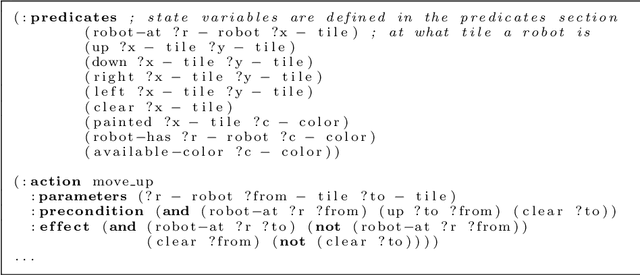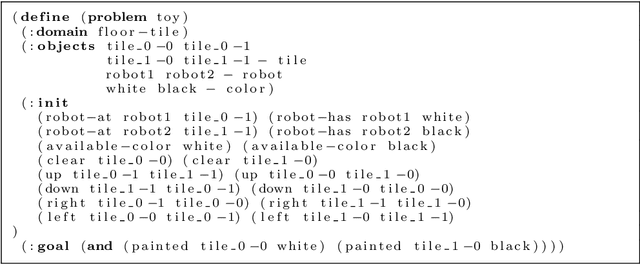Christopher Stone
Automating Reformulation of Essence Specifications via Graph Rewriting
Nov 14, 2024Abstract:Formulating an effective constraint model of a parameterised problem class is crucial to the efficiency with which instances of the class can subsequently be solved. It is difficult to know beforehand which of a set of candidate models will perform best in practice. This paper presents a system that employs graph rewriting to reformulate an input model for improved performance automatically. By situating our work in the Essence abstract constraint specification language, we can use the structure in its high level variable types to trigger rewrites directly. We implement our system via rewrite rules expressed in the Graph Programs 2 language, applied to the abstract syntax tree of an input specification. We show how to automatically translate the solution of the reformulated problem into a solution of the original problem for verification and presentation. We demonstrate the efficacy of our system with a detailed case study.
Towards Exploratory Reformulation of Constraint Models
Nov 20, 2023



Abstract:It is well established that formulating an effective constraint model of a problem of interest is crucial to the efficiency with which it can subsequently be solved. Following from the observation that it is difficult, if not impossible, to know a priori which of a set of candidate models will perform best in practice, we envisage a system that explores the space of models through a process of reformulation from an initial model, guided by performance on a set of training instances from the problem class under consideration. We plan to situate this system in a refinement-based approach, where a user writes a constraint specification describing a problem above the level of abstraction at which many modelling decisions are made. In this position paper we set out our plan for an exploratory reformulation system, and discuss progress made so far.
Exploring Instance Generation for Automated Planning
Sep 21, 2020



Abstract:Many of the core disciplines of artificial intelligence have sets of standard benchmark problems well known and widely used by the community when developing new algorithms. Constraint programming and automated planning are examples of these areas, where the behaviour of a new algorithm is measured by how it performs on these instances. Typically the efficiency of each solving method varies not only between problems, but also between instances of the same problem. Therefore, having a diverse set of instances is crucial to be able to effectively evaluate a new solving method. Current methods for automatic generation of instances for Constraint Programming problems start with a declarative model and search for instances with some desired attributes, such as hardness or size. We first explore the difficulties of adapting this approach to generate instances starting from problem specifications written in PDDL, the de-facto standard language of the automated planning community. We then propose a new approach where the whole planning problem description is modelled using Essence, an abstract modelling language that allows expressing high-level structures without committing to a particular low level representation in PDDL.
 Add to Chrome
Add to Chrome Add to Firefox
Add to Firefox Add to Edge
Add to Edge